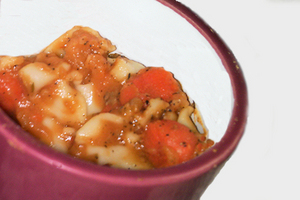Turnips are a wonderful root plant to grow in your garden, because the entire plant is edible. The roots are used in salads, main dish menus or added with other vegetables for added flavor. The leaves can be sautéed like spinach, or tossed into a salad.
Did you know that turnips not only taste delicious, they are healthy to eat? The root or bulb contains fiber, chromium, potassium, manganese, folate, vitamin C, B6, calcium, and copper. The leaves provides many of the same vitamins and minerals, but they have protein, thiamin, riboflavin, iron, vitamins A, E, and K, pantothenic acid and phosphorus.
Prepare the garden site early in the spring. Turnips grow best when the weather is still cool. Find an area that has full sun, although they will still grow in partial sun exposure. For best growing results, do not plant the turnips in an area where you grew vegetables like cabbage, broccoli, or brussel sprouts. They are susceptible to disease like clubroot. This will remain in your soil for 7 years and it thrives in acidic soil. Till or dig the soil with a garden fork to a depth of 15 inches. Amend the soil with 2 to 3 inches of organic compost. If possible, add some well-rotted manure to the soil. Allow the soil to settle for several days before planting.
Mark the rows and Sow the Seeds
Mark your planting row with a piece of twine tied onto two stakes. Or if you are like me, just eyeball it. But still put in some kind of marker so you know where you planted them. Try to keep the seeds so they are one seed every 3 to 5 inches. If you plant them closer, you will need to thin them later. Space the rows 10 to 15 inches apart.
Lightly cover the seed. The seed should be 1/4 to 1/2 inch deep. Depending on the weather, it can take 1.5 to 2 weeks for seeds to germinate.
Watering
With the sprayer nozzle attached to your garden hose, moisten the soil gently. If the sprayer is set too hard, you will knock the seeds out of the row or bury them too deep to grow. Through the growing season, do not allow the soil to dry out. Keep the soil moist, but not soggy.
Fertilize
One month after sowing if you didn’t add any manure to the soil, apply some complete fertilizer. Turnips do not need too much fertilizer or they will put all their energy into the leaf part, but the root will be small. If you are growing turnips for the leaves, then fertilize with a high nitrogen fertilizer. If you want to eat the roots, do not use a fertilizer that is high in nitrogen.
While the weather is cool, plant successive crops at three-week intervals. Stop sowing 5 weeks before expected 80-degree weather.
If you want a late crop of turnips, sow them in late summer.
Pests
Few pests bother turnips. They may get aphids, root maggots, caterpillars, or grubs. To control aphids, spray the leaves with a blast of water. Be careful that you do not have the water pressure too hard, or you will harm your plants. This knocks the aphids off the plants and they will not return to the plants. The caterpillars or grubs you can remove by hand. Fill a bucket with hot soapy water and drop them into the bucket. Prevent root maggots by covering the turnips with a row cover.
Harvesting
In about 5 weeks, when the turnip root is 2 to 2.5 inches in diameter, it is time to harvest them. If you planted the turnips for a fall crop, it may take 8 to 10 weeks before you can harvest them. If possible, leave them in the garden until your area has a light frost. This brings out the sweetness in the turnips. One thing to note; harvest the turnips when they are ready, do not wait. Pull them right away or they will be woody and tough. Pull the turnips out of the ground.
Storage
Cut the tops off the turnips. Place the turnips in a basket or crate and store them in the cellar.
Sources:
Nutrition and You: Turnips
The Garden Helper: Plant and Grow Root Crops in Your Home Vegetable Garden
